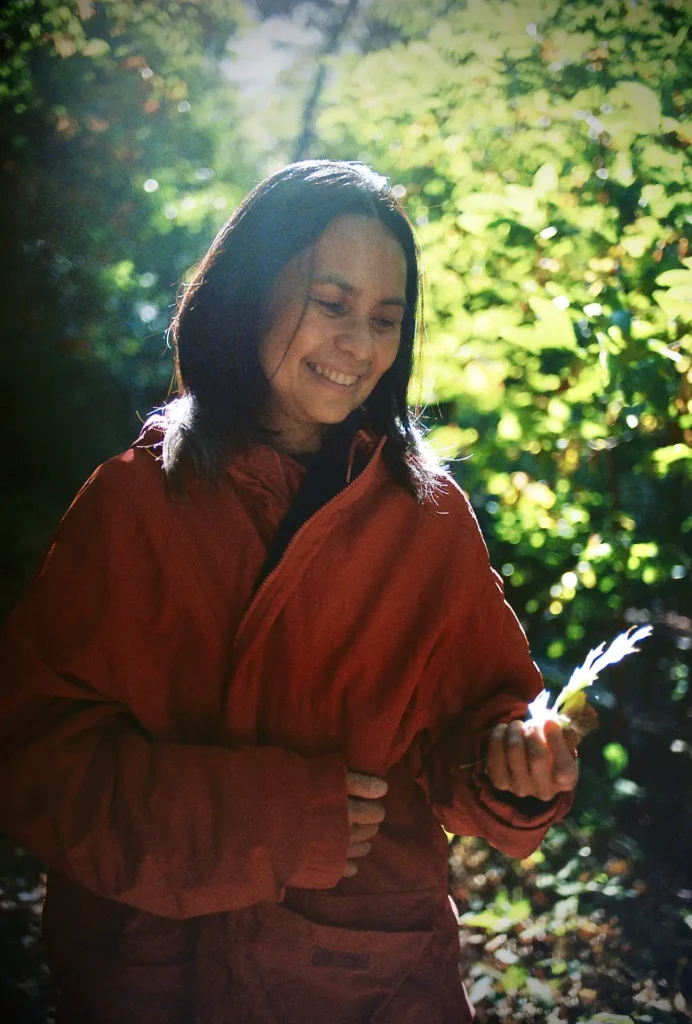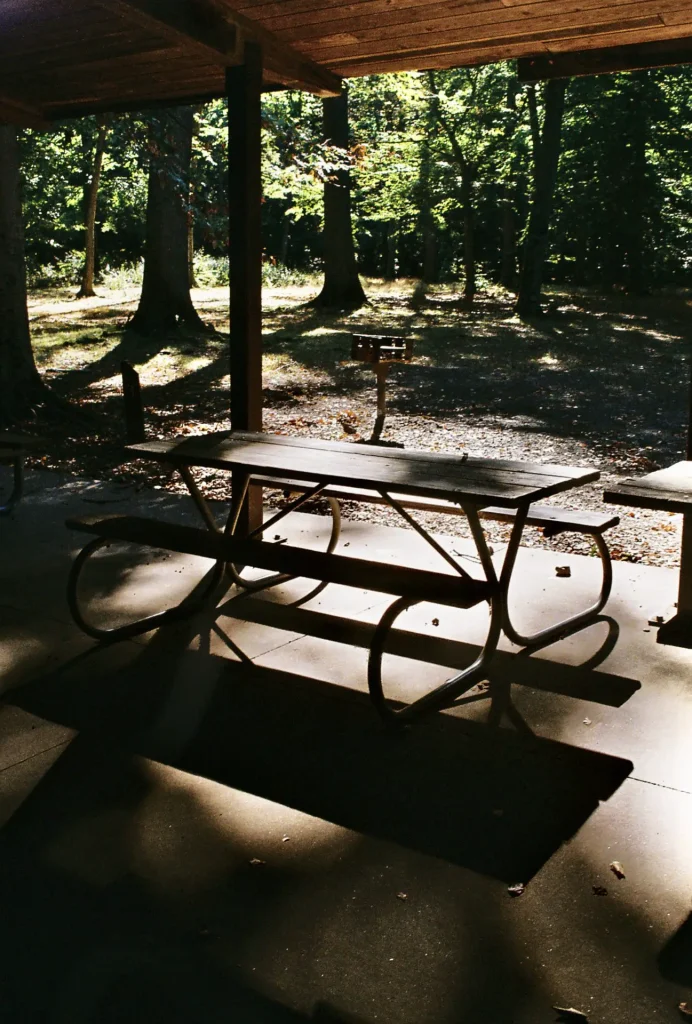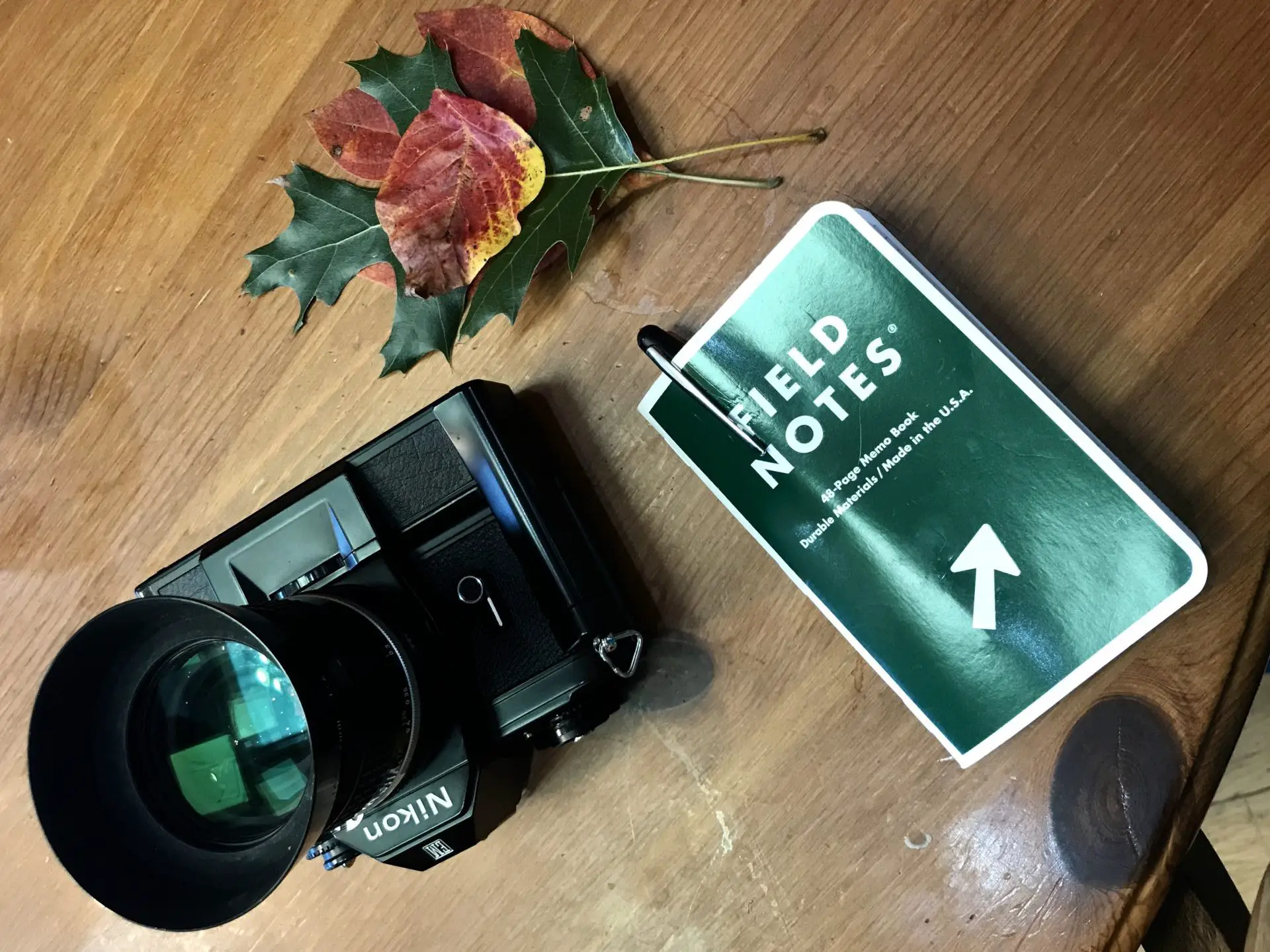In a prior post I shared my thoughts on the Pentax MV-1 which I purchased at the same time I found a Nikon EM. I bought both in an attempt to replicate the great experience I had using the compact, Olympus XA, but in a slightly bigger body.
I got my Nikon EM body with its dedicated MD-E auto winder. In spit of the combo being bulkier that the EM alone, It actually feels very good in my hands, especially with the modest hand grip up front. It comes close to the great handling I felt with my old Olympus EM-5 digital micro43 camera plus battery pack. Hence, I have used the EM with its winder attached the whole time I’ve owned it.
I know that when the EM first came out there were many critics who said it was too much of a “cheap” amateur camera compared to the hefty F-series pro cameras. My experience is very different. The camera feels very solid and reassuring in hand. When the EM arrived I borrowed a Nikkor 35mm F2.0 from a friend. Mounting the very solid Nikkor made the EM feel even more substantial.
Control Comparison
The controls on the EM are very similar to the Pentax MV-1: a simple three way switch around the shutter release with options for AUTO (for camera-determined shutter speeds), M90 (1/90 sec) for flash and B for long exposure Bulb. The last 2 setting allow the cameras to be used without a battery. Apparently, when set to AUTO without a battery, the camera fires at a shutter speed of approximately 1/1000, though I have not tried this feature yet.
The light meter is activated by pulling out the film advance lever partway. Looking through the viewfinder, to the left one sees a set of shutter speeds from 1/1000 at the top to 1 sec at the bottom. The light meter needle indicates the approximate shutter speed selected by the camera. The camera alerts the shooter with an audible beep if the meter deems the exposure to be over, or if shutter speeds below 1/30 are used. Unlike the MV-1, the EM has a backlight compensation button on the left front of the camera body, which provides an additional 2 stops of exposure when pressed. While this does not have the flexibility of a real exposure compensation dial, it works well.
Advantages in the Real World
The EM’s finder is bright, and focusing has been very quick and easy. This is the biggest advantage of this camera compared to the Pentax MV-1 and compact 40mm pancake lens. I have had a much better shooting experience with the Nikon EM. Technically, the fact that the EM also has clear shutter speed readouts and a needle gives it a better set of visual indicators compared to the color “smears” for over, under and correct exposure of the MV-1. But, in action, I hardly refer to the needle and shutter speeds anyway, so this was not really a big advantage.
Results
I have never owned or shot with Nikon equipment extensively before, but because of the reputation of the lenses, I expected the images to come out very well. After seeing the downloaded scanned images, I was not disappointed, The color rendition of the Nikkor on Kodak Ultramax 400 was really good, and Nikon’s bottom center-weighted metering pattern did pretty well overall. I am very pleased with the results, and look forward to shooting with the EM more frequently.





Verdict
The Nikon EM certainly has a few advantages versus the Pentax MV-1: the backlight button, the ability to use 3 shutter speeds without a battery, and bright viewfinder are the top three in my book. However, the EM and 35mm Nikkor combo is no match for the diminutive Pentax MV-1 and 40mm F2.8 pancake in terms of compactness and portability. Because of its smaller overall size, shooting the MV-1 feels closer to shototing with the Olympus XA, but with a more comfortable to hold/use camera body. With the EM I find myself shooting more deliberately and slowly, as I would with my film or digital rangefinders. Granted this is in part due to using it with the EM Winder, but the bigger Nikkor lens also adds to this feeling.
That said, the Nikon EM and Pentax MV-1 are both excellent compact cameras to shoot with, though I would use the MV-1 for the more intuitive and stealthy style required for street shooting. The Nikon EM and MD-E winder is better suited for more less rushed moments like portrait or nature photography.
All in all, I am really pleased with how this comparison went, and I look forward to using both these cameras regularly for the foreseeable future.
If you want to see more of my work, you can follow my Instagram feed: @photoedontheweb. Thanks for reading!
Share this post:










Comments
Tom Sheppard on Nikon EM & Nikkor 35mm Review – A Quest for An Ideal Compact Film SLR – Pt2 – by Ed Lara
Comment posted: 09/01/2020
I wonder how you may feel about a Nikon EM without the winder, and the Nikon E 50mm f1.8 lens attached.
This would be a very close match for the Pentax MV.
I shoot a Pentax ME Super quite a bit and also enjoy shooting Nikon cameras.
I have shot the larger Nikons, but your review entices me to try the EM.
Thanks again
Tom
Castelli Daniel on Nikon EM & Nikkor 35mm Review – A Quest for An Ideal Compact Film SLR – Pt2 – by Ed Lara
Comment posted: 09/01/2020
I enjoyed your review on the tiny but mighty EM. At the time Nikon released the EM, they stated that they would not compromise quality for the sake of size. That’s one of the reasons it’s slightly larger than it’s counterparts. Back in the 80’s (!), a few of my photo students bought the EM. We took a day trip to NYC for some urban photography and ended up at Nikon House. Nikon had on display a fully disassembled EM under glass. So cool and such attention to build and quality. Quite complicated.
Try working w/your EM w/out the winder and fit the E series 35mm or 50mm. You’ll really get the sense of how compact the EM really is.
Good luck and good shooting!
Comment posted: 09/01/2020
Tony Oresteen on Nikon EM & Nikkor 35mm Review – A Quest for An Ideal Compact Film SLR – Pt2 – by Ed Lara
Comment posted: 09/01/2020
Besides the Zukio glass, the fact that I can still get them serviced (www.zuiko.com) is what drove my decision.
Charles Morgan on Nikon EM & Nikkor 35mm Review – A Quest for An Ideal Compact Film SLR – Pt2 – by Ed Lara
Comment posted: 11/01/2020
Comment posted: 11/01/2020
eric on Nikon EM & Nikkor 35mm Review – A Quest for An Ideal Compact Film SLR – Pt2 – by Ed Lara
Comment posted: 13/01/2020
John on Nikon EM & Nikkor 35mm Review – A Quest for An Ideal Compact Film SLR – Pt2 – by Ed Lara
Comment posted: 16/03/2020
Comment posted: 16/03/2020
Shubroto Bhattacharjee on Nikon EM & Nikkor 35mm Review – A Quest for An Ideal Compact Film SLR – Pt2 – by Ed Lara
Comment posted: 01/04/2020
The "humble" EM was the basis of my first Nikon outfit -- EM body; Series-E lenses 35/2.5, 50/1.8, and 100/2.8; MD-E winder; and SB-E flash.
I absolutely loved that 100/2.8 optic.
The EM was the first Nikon to convey the aperture-in-use to an appropriately dedicated flash -- tiny SB-E [3 stops], larger SB-19 [6 stops], and similar Vivitar models [5200, which I owned, and larger 5600] with the appropriate foot. Took the guesswork out of so-called "Auto" flash mode. Brilliant!
The larger MD-14 motordrive upped the firing rate to just over 3fps.
The design was by the famed Giorgetto Giugiaro, who also designed the professional F3 and subsequent models; the EM lacked his trademark red-stripe!
The late, great Herbert Keppler had described an unofficial depth-of-field preview method for the EM [and FG-20/FG] that I used gratefully over my ownership.
Great things did come in small packages in those days!
Comment posted: 01/04/2020
Comment posted: 01/04/2020
AW on Nikon EM & Nikkor 35mm Review – A Quest for An Ideal Compact Film SLR – Pt2 – by Ed Lara
Comment posted: 05/02/2021
steve marino on Nikon EM & Nikkor 35mm Review – A Quest for An Ideal Compact Film SLR – Pt2 – by Ed Lara
Comment posted: 16/05/2022
Still, I end up shooting the EM because the 1.5 stop button gives me quicker control over the exposure (sort of) vs the MV's ISO dial. The darkish focus screen on the MV isn't as nice as the EM's, but it's good enough. The FG cameras have more features, but they have more electrical troubles. I've never seen a an EM that didn't work right. The MV can use T mount lenses w/ adapters, as well as M42 lenses w/ a PK adapter. The Nikon can use Nikon lenses and Leica R lenses w/ an adapter. So between the 2, there's a LOT of legacy lenses that can be used on them.